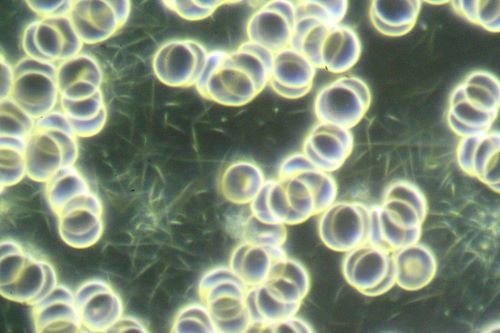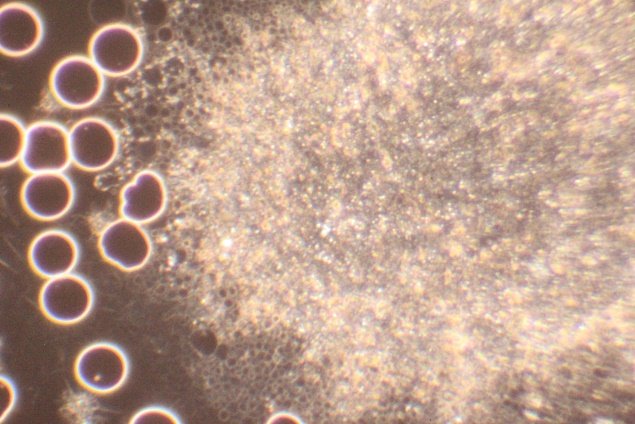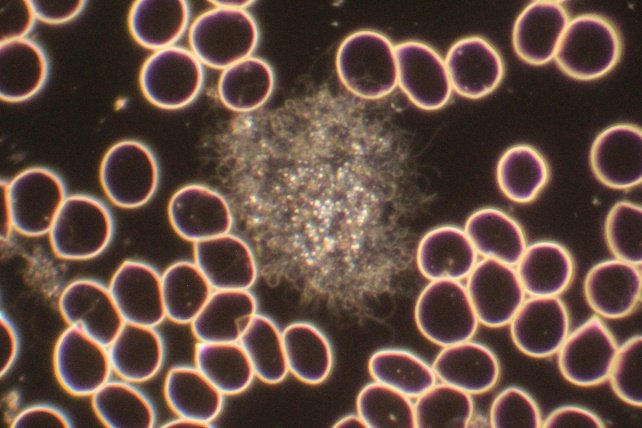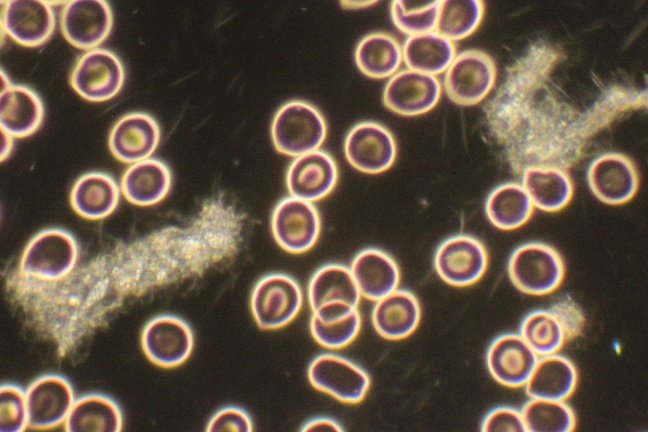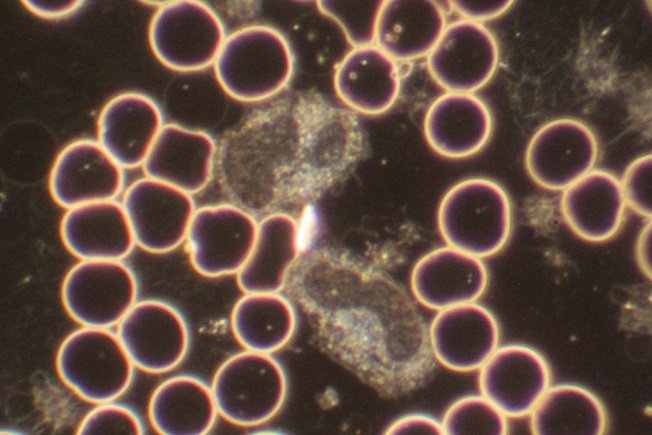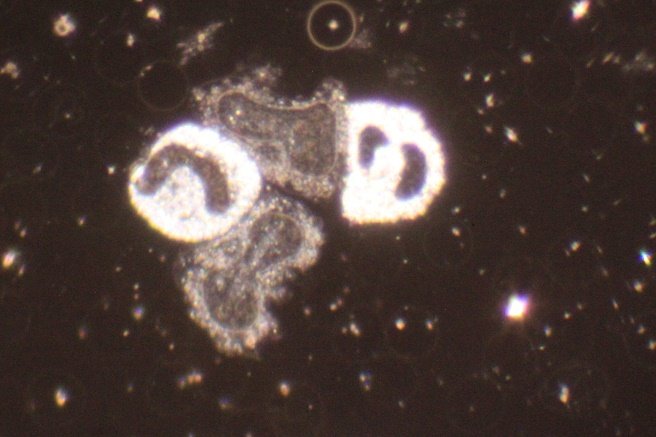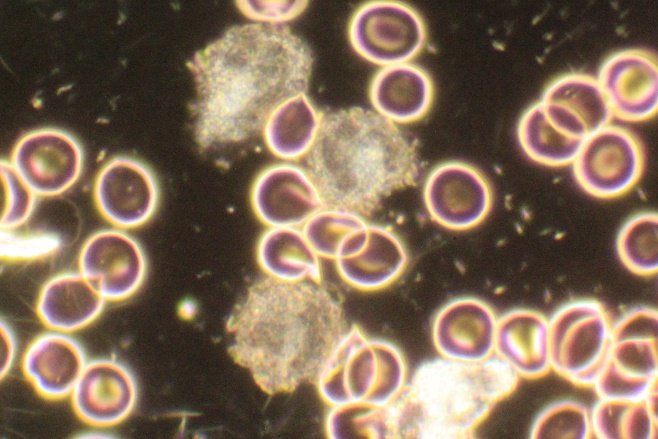
Has Blood Changed Since the Covid Pandemic?
How has what we see in the blood changed since Covid 19? Is there a change in the indications that we see using Live Blood Analysis?
A new world
There is no doubt that the world as we knew it pre-pandemic no longer exists. Travelling, working, relationships and families have all been affected - we have been through a collective trauma caused by a virus.
Not everyone and not every country has had the same experience though. The differences in resources, in infrastructure, in government and health care between countries around the world have created different outcomes.
The measures taken by the dominant Western countries have created chaos that has rippled throughout the world, touching everyone. Mask wearing, vaccine mandates, lockdowns and restrictions in medical treatments to name but a few.
I am a Live and Dry Blood Analyst and I have been looking at blood through a microscope for over 11 years. Since the pandemic, I have seen some changes in the blood and in this blog post I am going to share some of my observations and my understanding of how this virus and how the vaccine has affected my clients’ blood.
What Live Blood Analysis is not
At this point I feel that I should state that live blood analysis is not diagnostic of any kind of disease, condition or syndrome. It is a tool for observing a sample of living blood and as such it provides a unique insight into how this biological fluid is functioning.
Of course, the blood sample is no longer being regulated by the body and so this is taken into account. However, how quickly the blood ages and the effect this has on the cells is still relevant.
You also take into account the impact of the sampling technique, whether it is fasted blood or not and the health history of the person whose blood it is and how that may affect the blood (including medications, supplements, lifestyle etc).
Finally you must also be aware of artefacts – these are not in the blood or of the blood but rather contaminants in the sample and/or manufacturing defects on the slides and coverslips.
What have I seen under the microscope in my clinic since the pandemic?
The clients that come to see me are varied and diverse.
Some are interested in maintaining and monitoring health in order to prevent illness. Some suffer from a variety of health issues and are looking at alternatives to pharmaceutical interventions in order to do as much as they can to maintain or gain health.
Some have even been to their doctor and had a multitude of tests carried out but have been told that there is nothing out of the ordinary in the results and so, cannot be given treatment.
After the first lockdown finished and we were allowed to do face to face consultations once more, I was able to observe blood and build a body of documentation – blood after the pandemic.
What the blood tells us
In my career as an analyst I have seen the blood of hundreds of people. I have seen millions of blood cells under the microscope.
I have looked at the blood of people with all kinds of diseases including diabetes, AIDS, CVD, leukaemia, MS, cancer, those with many symptoms such as IBS, migraine, allergies and many, many others.
Each of them had a unique blood picture - there are usually no specific blood analysis indications for each disease or symptom.
The blood reflects the person’s terrain – the inner environment that supports the cells. The appearance of the cells in the blood tells a story of the health/balance of the inner terrain.
As an analyst you are trying to read the story by putting together all of the pieces of the health puzzle. It is not enough to use the blood alone - it holds clues as does the patient’s case history.
The blood will alert you to a B12 deficiency for example, but why it is deficient needs further thought. Does the diet contain adequate B12? Is the digestion optimal and capable of breaking down the food to obtain the B12 and also absorb it? What lifestyle choices could be depleting B12? Are there any symptoms reflecting B12 deficiency? Do they have issues with methylation? Are there other blood tests that correlate B12 issues? It is not as simple as just supplementing with B12.
However, in my experience, during the pandemic and after it, the blood of those who either had had COVID or had the injection to innoculate against COVID (or both), had several distinct indications.
Indications in the blood
The following pictures are from my clinic and are taken from clients who have a variety of health issues related to COVID. They are either suffering with Long Covid symptoms or have been injured by the vaccine.
In many cases the vaccine injury is actually confirmed in their NHS health records. Some have been able to get compensation, some are having to fight very hard to get support.
Only a very few have been able to get any effective treatment from their NHS doctor and despite having multiple tests from a variety of consultants they are often told that “everything is normal”. As a result of their experiences, they have turned to private health care.
Please note: These indications are not diagnostic and they existed before the pandemic. However, they were most commonly found in those with metabolic disorders such as Diabetes or cardiovascular issues. What has changed is the prevalence of them in people who appeared to be healthy before the pandemic.
Fibrin
In nearly every single case I have found fibrin in their blood samples.
Fibrin is a long protein that is produced to create a clot in the circulatory system. Fibrin is formed from fibrinogen which is produced in the liver in response to inflammatory chemicals released by white blood cells. It is also part of the coagulation cascade as it creates clots which prevent bleeding and protects the linings of the circulatory system.
Fibrin in the live blood can be indicative of liver stress, circulatory stress, inflammation, pathogenic infections, toxicity and/or leaky gut. When looking at a sample and assessing the fibrin I am also looking at other indications, symptoms and health history that can help pinpoint the cause of the fibrin presence.
Fibrin in the circulatory system will be congestive to circulation, preventing the optimal flow of red blood cells to the micro circulation, creating a lack of oxygen to all cells, tissues and organs throughout the body.
Rouleaux & Aggregation
Red blood cells are supposed to bounce around in the plasma as separate cells. They only bunch up and stick together when the balance of ions inside the cells and outside the cells has altered.
Red blood cells repel each other in circulation because of the charge on the cell membrane. This charge is only created when the membranes are composed of the right mix of lipids and proteins AND the surrounding environment is also balanced with the correct ions.
This balance of charges across membranes is known as zeta potential – the difference between the charge on the inside of the cell and the charge on the outside of the membrane are strongly opposed creating a “potential” which enables the cells to flow freely and provide optimum oxygenation throughout the body.
Cells lose this potential when their membranes are coated with proteins that change the charge. These proteins are inflammatory chemicals that attract to the surface of the red blood cells. This is yet another indication of inflammation and it can lead to a lack of oxygen in the cells, tissues and organs.
Thrombocyte Aggregations
Thrombocytes are cell fragments that are about a quarter of the size of a red blood cell. They circulate within the blood and secrete clotting factors when they are activated by other cellular chemical signals.
Once they are activated, they release chemicals, become sticky and aggregate with other thrombocytes to form larger masses. They are part of the clotting cascade and are often found in the blood along with fibrin because they are both activated/formed by the same chemicals.
The chemicals that the activated thrombocytes release are inflammatory themselves and can cause the aggregations to grow further, generating more chemicals which are released in vesicles, becoming hypersecretory aggregations.
These are congestive to the circulation and can block the microcirculation. The larger they are, the more dangerous they are to health. Our blood’s homeostatic mechanisms normally down regulate thrombocyte aggregation but when the body is out of balance this may not happen. The root cause is an inflammatory trigger and until that is switched off, the aggregations will continue to happen.
As with the fibrin and the rouleau, oxygen delivery to cells, tissues and organs is disrupted in the presence of thrombocyte aggregations. Symptoms such as cold hands and feet may be common, but also brain fog, all kinds of aches and pains anywhere in the body, dizziness and balance issues, and heart palpitations can be experienced.
Immune cell changes
Our largest white blood cell (wbc) is a monocyte. It is a phagocyte – it ingests pathogens, toxins and dead cells. It cleans up our inner terrain and literally digests bacteria, fungi, parasites and viruses.
All our immune cells communicate with each other to share information about what sort of things they have found. They are like an army with walky-talkies, warning each other of threats so that they can become primed with the right weapons or charge towards a threat and work together to neutralise it!
In patients with long Covid a rise in the number of monocytes found in the blood has been observed. They are also activated monocytes - this means that they have been triggered by the presence of a toxin/pathogen and have been actively ingesting and fighting this trigger.
Activated white blood cells all produce inflammatory chemicals and often where you see one type of wbc activated you will see other types activated too, because of this communication they have between them.
This in turn produces more inflammation which can activate thrombocytes and make fibrin form too. The excess inflammatory chemicals will also change the zeta potential on the red blood cell membranes, causing rouleaux formation.
It is a perfect storm for the coagulation cascade, formation of micro clots and a host of symptoms.
Why are these indications problematic for health?
All of the above symptoms are congestive to the delivery of oxygen to cells, tissues and organs. Oxygen is vital for every cell in our body.
It is why our red blood cells have no nucleus – there is no room in the cell for organelles, it can only fit in 4 massive protein molecules, haemoglobin. These molecules are responsible for carrying oxygen.
It is why our bone marrow produces 2 million red blood cells per second and why 2 million red blood cells are culled from circulation per second too. Our red blood cells do not reproduce, they live for 120 days on average and then their parts are recycled to produce new ones.
A lack of healthy, viable, free floating red blood cells will affect our health on all levels, especially if it continues for prolonged periods. It can accelerate aging and bring us closer to chronic disease.
This is why there are so many symptoms associated with Long Covid/vaccine damage because the most prominent features of these syndromes is the lack of oxygen availability to cells.
How do we stop this perfect storm?
You have to find the root cause - the trigger - and switch it off!
To be continued…….
Coming Soon
I will be discussing this topic in more detail in an online masterclass soon.
This masterclass is open to analysts, medical practitioners, complementary practitioners and those interested in becoming analysts themselves.
To be sent more information when the masterclass becomes available, please email us at info@naturecureacademy.com
Learn More About Live & Dry Blood Analysis
If you would like to find out how you can use Live and Dry Blood Analysis Training to assess your clients’ health, then please follow this link.
You are also invited to join our Facebook Group ‘Learning Live Blood Analysis’ - a private group of students, qualified analysts and anyone interested in learning.
If you have any questions about this topic or LDBA in general please email Shirah directly at info@naturecureacademy.com or add a comment below!
FREE email mini-series when you join our Mailing List
The Truth about Boosting the Immune System (& what can Live Blood Analysis tell us?)
Can we really “boost” our immune system to protect us against viruses like Covid 19? This article explores what the immune system is and how it works, how diet and nutrition can affect its function, and how LDBA can help us assess the state of a client’s immune system.
A Very Relevant Controversy
A few months ago, the press in the UK had a field day with headlines about boosting the immune system in the light of the coronavirus pandemic.
Why?
Recently, a company that were advertising their (prescription only) vitamin injections as “immune boosting” were banned by the Advertising Standards Agency (ASA).
They actually broke the advertising laws and regulations because you can’t promote prescription-only supplements like this in the UK. They were accused of suggesting their product could be used as a strategy to prevent viral infections which exploited the anxieties people have about contracting coronavirus.
However, the message that the ASA sent out to the media and to the public was essentially that no-one is allowed to promote a product as “immune boosting”.
A flurry of articles and TV news reports ensued – talking about whether you can or can’t boost the immune system.
Many social media posts that linked peer reviewed science studies showing how deficient nutrient levels adversely affect immune function – or – that supplementing certain nutrients have been shown to improve patient outcomes, such as shortening illness duration, limiting symptoms or improving recovery post illness were removed as “fake-news”.
So, what is the truth? Can we “boost” our immune system with nutrition?
If your immune system is running perfectly smoothly and you have no nutrient deficiencies or health problems then you can’t actually “boost” it beyond its normal level of functionality.
However, there is no doubt that you can influence the health of your immune system with nutrients - through diet and supplementation - especially if things aren’t at 100%.
Our immune systems rely on being fed with a variety of vitamins and minerals that are essential to its proper functioning. These nutrients need to be consumed through the diet or through supplementation – the body simply doesn’t manufacture them itself.
In this blog post I am going to present to you
A brief summary of the immune system – how it works and which cells/organs are involved.
I will show you the actual cells of the immune system – from my clinic’s live blood analysis pictures.
The essential nutrients your immune system needs in order to function properly.
Live and Dry Blood Analysis (LDBA) can assess the client’s immune system and identify the nutrients that may be deficient. I will show you what abnormal immune cells look like and what nutrients are indicated.
The best ways you can improve your levels of these nutrients and maintain immune health.
There may be multiple factors involved as to why clients are deficient in nutrients. I discuss the main areas to focus on and which recommendations may be relevant to improve a client’s immune system.
Lets briefly break down what the immune system is, how it works and what it looks like under the microscope
There are three layers to the immune system’s defence strategy:
1 – Physical barriers and biochemical barriers
The barriers of our immune system are:
the skin - which defends our body from environmental pathogens.
the respiratory tract - which is lined with mucous membranes designed to protect us from the pathogens that we breathe in.
the acid in our stomach - which kills any bacteria we may ingest.
the lining of our digestive tract - which is a barrier to stop pathogens, such as parasites and bacteria, entering our internal circulation.
2 – Immune System Cells such as monocytes, granulocytes, and lymphocytes (B and T cells)
These are all white blood cells. They are created in the bone marrow from blood stem cells and are released into the circulation where they travel to their destination to fight infection.
3 – Antibodies or immunoglobins – products of the immune cells that actively affect invading microbes and infected cells
These are the biochemical products of the immune cells that can trigger an attack on pathogens, stimulate immune cell production and actively kill bacteria or infected cells.
The immune system is divided into different pathways:
1 – The Innate Immune System
The cells of the innate immune response are the white blood cells such as neutrophils, basophils, eosinophils and monocytes.
These white blood cells can be seen in the blood when conducting a Live Blood Analysis.
Neutrophils are the most numerous and they roam the blood, ready to engulf (phagocytose) pathogens and/or migrate out of the circulation into the tissue if called on to do their work there. They contain granules that can literally digest the pathogens they engulf.
In blood analysis you can see if there are not enough of these in the sample – indicating immune suppression. Or you may see too many of them, indicating an immune response. Both need to be addressed.
In a healthy blood sample neutrophils should comprise 60% of all the white blood cells in a live blood sample.
healthy neutrophil
Eosinophils – these are most commonly found in the mucous membranes of the respiratory and digestive tract. They release chemicals as a defence against pathogens - specifically parasites - and in response to allergens in chronic allergic issues.
When you see them in the blood in numbers (they are rare wbcs) it means that there may be an active allergic response or a parasite infection.
In healthy blood sample eosinophils comprise 2 to 4 % of all white blood cells.
healthy eosinophil
Basophils – also called mast cells - these are rare to see in the blood unless they have been triggered to respond.
They release heparin to prevent clotting in inflamed tissues and they release histamine as a first response to an allergen.
If you see several in a blood sample it indicates a possible inflammatory response or allergic response. For more information about how LDBA can reveal allergies see this previous blog post.
In a healthy blood sample basophils should comprise only 0.5 to 1% of all white blood cells.
healthy basophil
2 – The Adaptive Immune System
This is a very specific targeting system that has evolved to protect us against viruses. It literally adapts to defend against specific invaders.
This system involves antigen responses - antibodies - that are produced by the T and B lymphocyte cells when they are activated by exposure to the pathogen.
T-cells – Initially, T-cells leave the bone marrow, travel via the blood to the thymus gland where they mature. They develop receptors for antigens and then circulate within the lymphoid organs until activated.
Once an antigen is picked up by the T-cell it becomes a helper T-cell and proliferates, triggering other immune cells to attack by releasing cytokines and helping B-cells produce antibodies.
T-cells can also become cytotoxic T-cells which actively seek out cells that are infected with viruses or bacteria - and kill them. They even kill cancerous cells. (see picture below of cytotoxic lymphocyte)
After infection, T-cells can become memory T-cells, which are antigen-specific and long-lived cells. These can quickly proliferate upon re-exposure to even the smallest amount of the antigen.
B-cells – These lymphocytes remain in the bone marrow to mature then they migrate to the spleen and lymphoid tissue. Here they wait – in the mucosa and linings of the colon, respiratory tract for example - to be triggered by a pathogen/antigen.
Once activated (by antigens or by T-cells) B-cells enlarge and produce specialised complex proteins called antibodies to specific antigens. (see picture below of activated lymphocytes)
Memory B-cells are long lived cells that circulate in case of re-infection and will proliferate, with the help of T-cells, to deal with a re-infection before it takes hold.
Normal, Activated & Cytotoxic Lymphocytes
In a healthy blood sample lymphocytes comprise around 35% of all white blood cells.
Increased numbers can indicate viral infection or acute/chronic inflammatory processes, overload of toxicity or chronic infection.
Low levels can indicate lengthy chronic viral infection leading to lymphocyte exhaustion or nutrient deficiencies such as B12, B6, folic acid.
3 – The Complement System – this works with both the innate and the adaptive immune system.
As the name suggests this part of the immune system complements the actions of the others. It doesn’t include cells but it stimulates the other white blood cells into action by the production of specific proteins – chemical messengers that
Stimulate phagocytes to clear pathogens and damaged cells.
Instigate inflammation to attract more phagocytes.
Activate a membrane attack complex to kill bacterial cells.
Why is good nutrition important?
Adequate nutrition is crucial to supply the immune system with energy and the building blocks of its biochemical defence products
The immune system is complex for good reason; it is responsible for keeping us alive! You can imagine that it needs a lot of fuel and a constant supply of diverse nutrients to keep it functioning optimally.
Below is a brief summary of the most vital nutrients required along with how a possible deficiency of these nutrients can be picked up via LDBA.
Firstly – The Macronutrients – protein and lipids.
Protein -
is vital for our immune system to be able to manufacture cytokines and complement proteins.
is crucial to the mucosal barriers which are vital barrier protection.
deficiency affects the thymus gland, which matures and produces our T cells.
Protein deficiency – moderate, mild or severe - can be surprisingly common especially amongst vegetarians, vegans, dieters and those with digestive disorders. Alongside protein deficiency there are likely to be other micronutrient deficiencies as well.
LDBA can reveal protein issues – such as “protein linkage” (ineffective protein digestion, inadequate protein intake) and “lack of fibrin web” (same).
Cross-referencing other indications in the blood analysis - along with examination of diet and other symptoms, especially digestive - will help to find the root cause of any protein issues.
Protein Linkage
Essential fatty acids are another macronutrient essential for immune function. They are incorporated in the membrane phospholipids in immune cells where:
they modulate immune cell signalling and inflammatory processes.
they regulate T and B cells by taking long-chain fatty acids (arachidonic and EPA) from the membranes and transform them with enzymes to create prostaglandins and other immune cell products.
deficiency of EFAs and/or too many omega 6 fats can lead to imbalances in inflammatory responses such as pro-inflammatory issues.
Live Blood Analysis can assess the health of the cell membranes of all the blood cells – red and white – which will give an indication of lipid status.
A lack of integrity of cell membranes can be seen in cells that literally break apart, or “lyse” (see image below) in the sample. This indicates that the lipids that are incorporated in the membrane are composed of the wrong proportions and/or types of lipids.
lysed ghost cells
Secondly – but just as vital – the micronutrients
The micronutrients used in the immune system are Vitamin A, C, D, E, B2, B6 and B12, folic acid, beta carotene, iron, selenium and zinc.
Zinc
Zinc is one of the most important minerals for immune function. It is not stored in the body so it needs to be constantly supplied by the diet:
A lack of zinc will:
decrease the numbers of lymphocytes
lower production of antibodies and make them less effective
disable neutrophils’ ability to move towards pathogens
increase levels of oxidative stress
Macrocytes are the biggest phagocytic cells of the immune system – they physically ingest pathogens and kill them. They cannot do this without zinc.
Pro-inflammatory cytokines are increased in zinc deficiency.
In zinc deficiency, Live Blood Analysis will show neutrophils that are non-motile, there will be low levels of lymphocytes and the Dry Blood Analysis will show high levels of oxidative stress.
Vitamin C
This is one of the most famous of the vitamins known to support the immune system.
Vitamin C is not stored in the body and so we need to have a constant supply in the diet. It is especially needed during stress and any kind of infection, because Vitamin C:
stimulates the production and function of white blood cells
stimulates motility of white blood cells
increases production of antibodies
protects white blood cells from autointoxication from the pathogen-killing chemicals they produce
regenerates vitamin E, a fat-soluble vital antioxidant that oxidises easily
is needed to help prevent the oxidative stress from damaging tissues and killing our own cells
Lack of neutrophil motility (same as above) or increased numbers of wbcs (picture) seen in Live Blood Analysis indicate a need for vitamin C.
High levels of oxidative stress as seen in the Dry Blood Analysis would also indicate a need for vitamin C.
These following micronutrients are fat soluble - they require healthy fats in order to be digested and absorbed properly - so efficient fat digestion is also key to getting enough of them into your cells.
Vitamin D
There are thousands of vitamin D receptors within the human genome and Vitamin D is thought to directly or indirectly regulate 100 to 1250 genes.
Vitamin D receptors are expressed in several types of immune system cells and vitamin D3 is now recognized to be a potent modulator of the immune system.
Vitamin D regulates antimicrobial proteins, which are critical components of the innate immune system because they directly kill pathogens, especially bacteria, and thereby enhance immunity.
These proteins also modulate immune functions through cell-signalling effects.
Vitamin D has also been shown to stimulate immune cell proliferation and cytokine production. Through these roles, vitamin D helps protect against infections caused by pathogens.
In blood analysis you can observe general immune system status through the presence, quality and levels of the white blood cells. Any indications of infection or inflammation – either in elevated levels of certain white blood cells or high levels of oxidative stress in dry blood analysis – can indicate possible vitamin D deficiency.
Vitamin A
Vitamin A is hugely important for the immune system; deficiency is surprisingly common. It is vital for protecting us on all levels against infections.
Vitamin A is crucial to the health of the immune system’s barrier protection such as the skin, mucosal cells of the eye, lining of the respiratory system and gastrointestinal tract.
Healthy neutrophils and lymphocytes require adequate vitamin A.
T and B lymphocytes need vitamin A to generate antibody responses to specific antigens.
In Live Blood Analysis we are able to make an assessment of the integrity of the gastrointestinal barrier by the appearance of “chylous” in the blood sample.
Clients fast for 5 hours before the test and so there should be no evidence of food particles in the blood – they will have all been absorbed. Chylous indicates that there may be a leak in the digestive tract – leaky gut – which can be a big indicator of Vitamin A status.
Chylous
Other nutrients that need mentioning –
B12 – Cobalamin - crucial as a coenzyme that helps to build DNA synthesis. Deficiency is known to decrease the numbers of circulating lymphocytes and suppress their ability to kill infected cells.
Folate - crucial for DNA replication and normal proliferation of white blood cells.
Both B12 and Folate deficiencies can be assessed with Live Blood Analysis. Here is a link to a previous blog post for more information.
Iron – needed for proliferation of T-cells and the creation of oxidative pathogen-killing chemicals.
However, iron supplementation can “feed” pathogens and help them replicate. Which is why free iron levels are automatically stored by the body as a response to infection or inflammation.
Live Blood Analysis can show iron deficiency. The presence of high levels of microcytes (small red blood cells) and codocytes (red blood cells appear like targets) are clear indicators of low iron levels.
Selenium – several important selenium-dependent enzymes function as important antioxidants. Selenium deficiency affects antibody production, and can enhance the progression of viral infections.
Any increase in lymphocytes and other white blood cells seen in Live Blood Analysis could indicate a need for selenium. Dry Blood Analysis will show high levels of oxidative stress.
Vitamin E – powerful antioxidant, promotes cell membrane health.
B6 – Pyridoxine – part of the building blocks of the immune system proteins like cytokines and antibodies.
Eight problem areas to address in order to improve immune system function
The reason for a possible deficiency in any macro or micronutrient is likely to be multifactorial and so questions need to be asked in order to get to the root cause of a deficiency, so that the appropriate recommendations can be made.
Diet – does the diet contain the necessary nutrients?
Make sure to take a deep look at the contents of the diet. Does it contain the vitamins and minerals that the immune system requires? Are there appropriate protein levels? Which fats are being consumed and in what quantity? https://pubmed.ncbi.nlm.nih.gov/17726308/
Digestion – are there any symptoms of digestive issues, dysbiosis, inadequate stomach acid and/or stress?
All of the above factors will affect whether vital nutrients can actually be broken down, digested and absorbed. https://www.ncbi.nlm.nih.gov/pmc/articles/PMC4513829/
Exercise – too much or too little?
Over-exercising can burden the body with excess oxidative stress which uses up precious antioxidants, conversely exercise can stimulate the immune system and help it function. https://pubmed.ncbi.nlm.nih.gov/18522619/
Stress – how much emotional or/and mental stress is there?
Stress diverts energy away from digestive processes and the stress hormone actually reduces the number of lymphocytes. https://www.ncbi.nlm.nih.gov/pmc/articles/PMC4465119/
Medication – check for medication that affects the immune system.
Medicines for illnesses such as rheumatoid arthritis, crohns disease, cancer, inflammation and treatment for transplant patients all affect the immune system. They are all designed to suppress the immune system to prevent inflammation and auto-immune reactions. https://www.ncbi.nlm.nih.gov/pmc/articles/PMC4706827/
Alcohol – how much is being consumed?
Too much alcohol will suppress the immune system, whereas it has been shown that small amounts can improve it. https://www.nature.com/articles/1601486.pdf
Pollution and toxicity – what levels of exposure are there?
This is a huge problem for people living in polluted areas. Assessing toxicity sources and eliminating where possible is essential for the immune system function. https://www.semanticscholar.org/paper/Multivitamin-Supplementation-Supports-Immune-By-Air-Haryanto-Suksmasari/72892c93510d261d3e9e05770782c2ddb6cf4056
Sleep – This really matters for the immune system.
Getting the right amount of sleep will regulate the immune system as it has been shown that the wake/sleep cycle synchronises with immune activity. Release of various cellular signalling products and can regulate inflammation. https://www.ncbi.nlm.nih.gov/pmc/articles/PMC3256323/
The immune system is complex and if it is nourished with all the necessary nutrients and given the right conditions it will always act to protect us.
We can use LDBA to monitor the immune system and keep an eye on any signs of immune stress and possible deficiencies.
LDBA is not a definitive diagnostic blood test. It is used to help reach a deeper level of understanding of health at a cellular level by assessing the most valuable biological fluid, the blood.
Indications can help make correlations between clients’ symptoms, their diet and lifestyle so that any recommendations can be truly individualised.
For further nutrition information, here is a great article called Important Diet Habits To Implement For A Healthy Immune System written by Fitness Volt which gives detailed advice as to what whole foods are most effective for maintaining the health of the immune system.
Learn More About Live & Dry Blood Analysis
If you would like to find out how you can use Live and Dry Blood Analysis Training to assess your clients’ health, then please follow this link.
You are also invited to join our Facebook Group ‘Learning Live Blood Analysis’ - a private group of students, qualified analysts and anyone interested in learning.
If you have any questions about this topic or LDBA in general please email Shirah directly at info@naturecureacademy.com or add a comment below!
FREE email mini-series when you join our Mailing List
Shirah Mustardé Ba DipNN
Course Director
Naturopathic Nutritionist
& Live Blood Analyst







